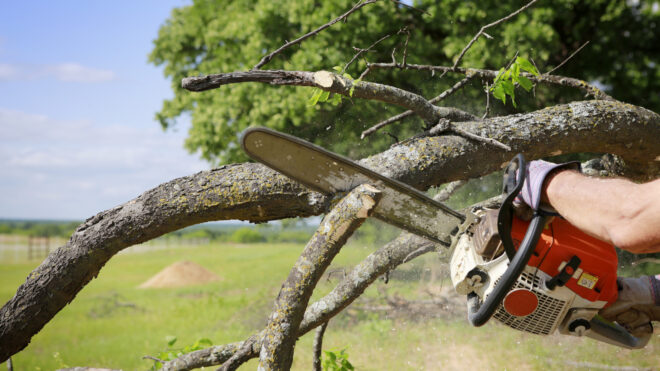If a tree falls on you, you will hear more than a sound. Up to 40,000 thunderstorms occur each day around the world. It takes just one gust of wind to rip a branch off a tree and send it through your property.
This is why tree trimming is so important. You must remove any dead or threatening branches before a storm rears its head.
But what are the signs of a dead tree? What tools do you need to trim branches? How can you learn how to trim trees, and when should you call the professionals?
Answer these questions and you can avoid costly tree damage through some basic measures. Here are seven tree trimming tips you can follow.
1. Study the Signs of a Dead Tree
A dead tree is a dangerous tree. It is okay to let a tree die if it doesn’t endanger your property. A dead tree can make room for a new tree and provide nutrients for plant life.
But you must monitor the trees that could fall on your property for the signs of a dying tree. Get close to them and see what color their bark is. Brown or black bark is a sign of death.
Take a look at the roots of your trees. Fungal growth is a tell-tale sign of a dead tree. Thinning foliage is another sign, especially if you notice it during the summertime.
You must respond to a dead tree as soon as possible. Follow tree trimming tips or remove the tree entirely.
2. Pick a Good Time for Tree Pruning
You may have a living tree with a branch that threatens your property. You may want to prune the branch right away.
Yet you can harm a tree if you prune a branch at the wrong time. Beetles can burrow into the cuts you make and eat the tree. Wait until the late fall or early winter to remove living tree branches.
3. Own Several Tree Trimming Tools
There is no one-size-fits-all tree trimming tool. Lopping shears are good for thin and small branches. If you have very thin branches you need to remove, you can get a hand pruner.
Branches that are thicker than two or three inches need pruning saws. The saw you buy should have serrated teeth so you can cut through the branch easily.
Very thick or long branches require more advanced tools. You can use a chainsaw, as long as you can safely operate it. You can also use a pole pruner when you need to remove a branch you cannot reach.
4. Cut Large Branches in Three Steps
Sawing at a large branch at its base rarely works. You can remove nearly all large branches with three simple steps.
Make an initial cut on the underside of the branch. Put your knife four or five inches from the trunk and then make a shallow cut. You can cut roughly one-half of the way into the branch.
You can then cut through the branch with a second cut. Try to position this cut two or three inches from the first one. Putting this gap between your two cuts will prevent the bark on the trunk from peeling off.
You should then remove the stub outside of the branch collar. Be careful not to damage the collar. Keeping it intact will help the tree heal and form a healthy branch.
5. Handle V-Shaped Branches With Care
Many trees form branches with V-shaped junctures. The juncture leaves little room for bark growth, which can result in tree decay.
You should remove one branch in order to avoid extensive decay. You can follow a similar approach to removing a large branch, using three cuts.
But be careful with your gestures so you do not injure the other branch. You may want to use thin shears that can fit inside of the juncture. It is okay to leave a bit of a stump, especially if removing the stump would damage the other branch.
6. Remove Clustered Branches
A cluster of branches can weaken a tree for several reasons. It can throw off the tree’s center of balance, causing it to fall over during a storm. The tree may not get adequate sunlight or air circulation.
Cut off at least two branches whenever you notice a cluster of four or more. Be symmetrical with the branches you remove so the tree is balanced.
7. Let the Professionals Handle Risky Situations
You can do most of your tree care on your own. Yet you should not do everything.
Trimming trees near electrical lines or underground pipes can be very dangerous. The same goes for massive branches or branches that are high off the ground.
The benefits of crane tree removal are substantial. Employees work quickly with cranes, removing trees in less than a day. Costs are cheap, especially if you compare them to the cost of damage from a fallen branch.
When in doubt, contact a tree maintenance company and ask an employee about their services. You can ask them to inspect your tree and see what they think. If they think a tree should go, you can hire the company.
The Seven Tree Trimming Tips You Must Follow
Tree trimming does not have to be difficult. Signs of a dead tree include blackened bark and fungal growth. Remove your dead branches right away, but wait until the fall to remove live branches.
You should own shears, pruning saws, and chainsaws. Cut large branches in three steps so the branch will not fall and tear off the bark.
Be careful with V-shaped junctures and clustered branches. When in doubt, hire a tree care company.
You don’t have to go far to find a good one. P’n’D Logging and Tree Service serves the Maple Valley area. Contact us today.

